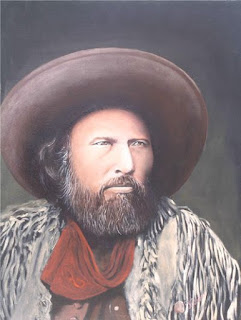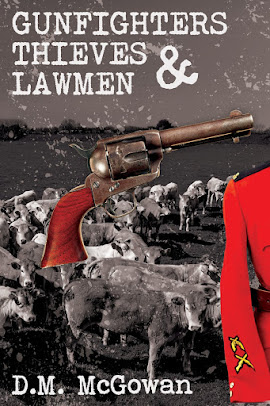It has been available before, but now a few things have been added. Such as a new cover.
Into the Mountains Background
Riel was indeed
the leader but the military leader or Métis General was Gabriel Dumont and he was joined by some Assiniboine
and Cree people. Despite being ill equipped in relation to the Canadian Militia
and North West Mounted Police and vastly outnumbered, the rebellion lasted for
several months and resulted in the deaths of 91 people. Had Dumont been allowed
to operate without political interference it probably would have lasted much
longer resulting in more death.
A portrait of Gabriel Dumont
When it was all
over several of the leaders escaped (Dumont into the US) and some, including
Riel were tried, convicted and executed. At least one and perhaps more of those
where not involved in the rebellion and tried to keep their people (Cree and
Assiniboine) out of the fracas and either died in Stoney Mountain Penitentiary
or shortly after release.
(There is a
“Heritage Minute” for Louis Riel at https://www.youtube.com/watch?time_continue=61&v=FVVFjfyvgMg
)
The militia
commandeered livestock (mounts and food) through-out the west to conduct the
campaign which did not endear them to the general populace. They also
demonstrated remarkable ineptitude in both planning and military tactics. They
then called in re-enforcements from the North West Mounted Police, who didn’t
have men to spare nor where they allowed time to fully understand their
situation and lack of support. In the end the NWMP, farmers, ranches, Métis,
Cree and Blackfoot were mistrustful of the Federal Government and their
militia.
A .45 caliber Gatling Gun. They were also manufactured in .50 cal.
An interesting
side-note is the US Army assistance. Two Gatling guns a Lieutenant and a few
troopers (three perhaps) where sent to assist the Canadian militia. Not so much
because anyone in Washington cared about Canada’s troubles but because they
wanted to see how some new ordinance introduced at the end of the US Civil War
would work under combat conditions. As was usually the case with early use of
the Gatling they jammed. If the operator cranked too fast the loading mechanism
would pile up and require clearing.
As with many
wars, no one won.
Louis Riel's children. Jean-Louis and Angelique
True, the Métis where forced into a corner by the
government and the treatment by those surrounding their communities but their
actions where definitely rebellious and therefor constituted treason. On the
other side the Métis had
tried several peaceful methods to elicit attention and change but had been
ignored. Therefor the government was guilty of incompetence and negligence but,
as is and always has been the case, no one was charged publically for that
ineptitude. The leaders of the losing side became public figures due to
imprisonment and execution while the leaders of the winning side (who caused it
all in the first place) where shuffled off to some innocuous position where
their names would quietly disappear from history.
The population of
Métis suddenly decrease dramatically. They
suddenly “disappeared.” Admittedly, some like Dumont went south of the 49th
parallel into the US. What happened to the rest?
Almost a century
later Métis suddenly appeared as individuals and
communities throughout the West. Perhaps “Into the Mountains”, fiction though
it is, supplies some explanation.
You can find out more by clicking on the cover to the right or go to










